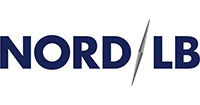lectures | catalogs | CDs/DVDs | soundpicdocs
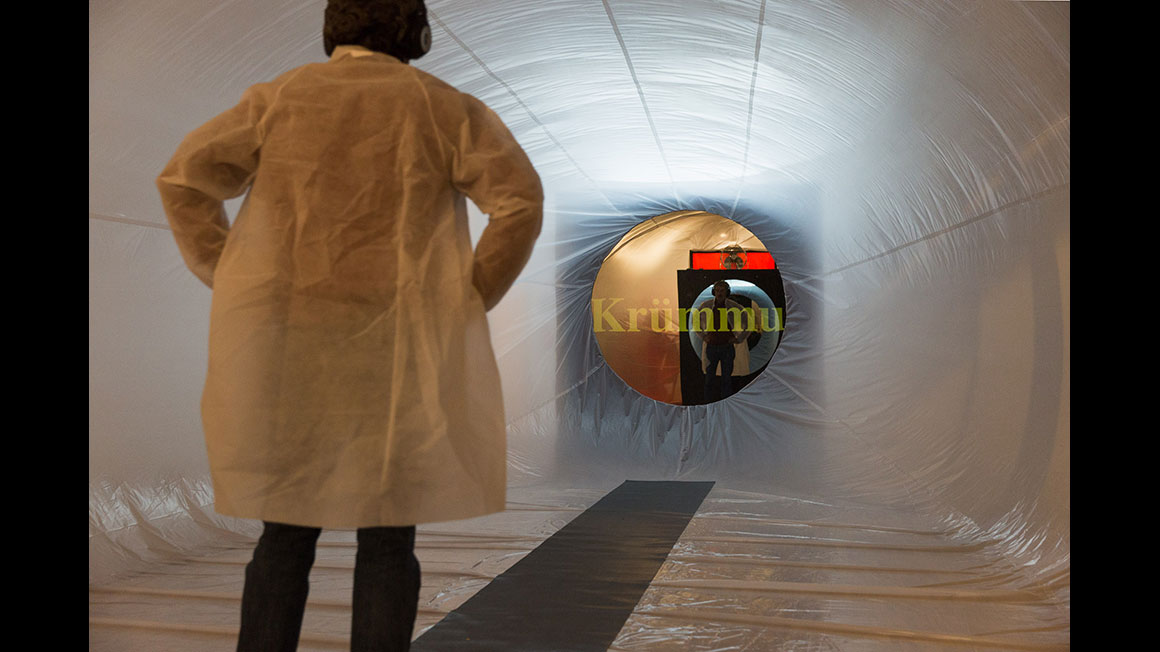
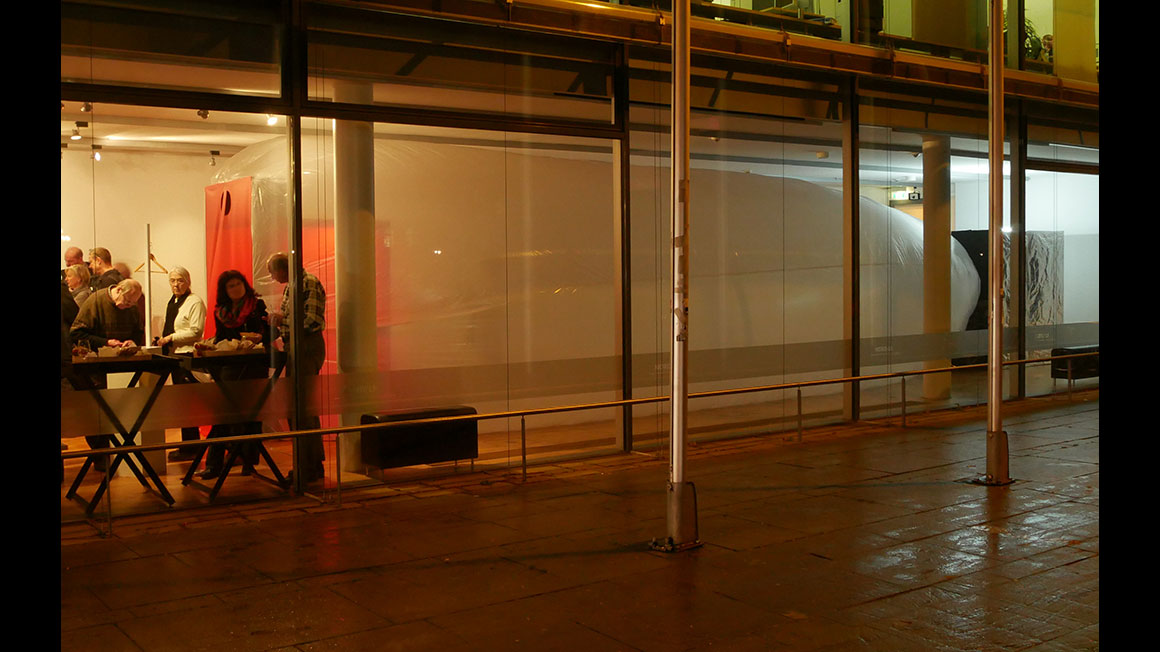
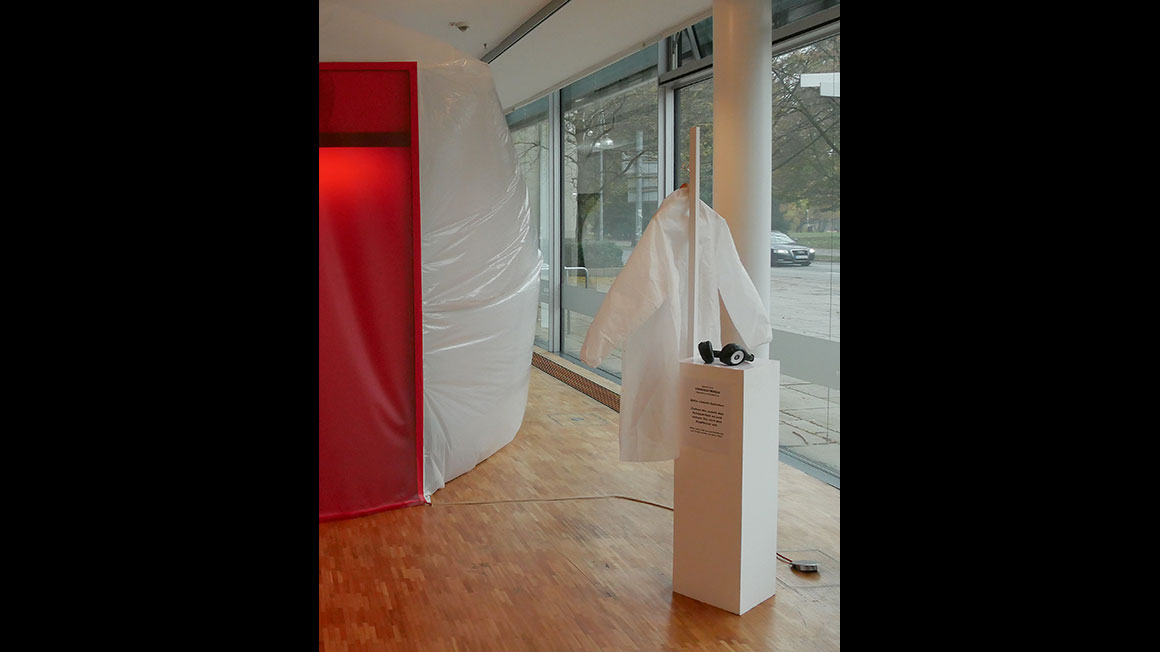
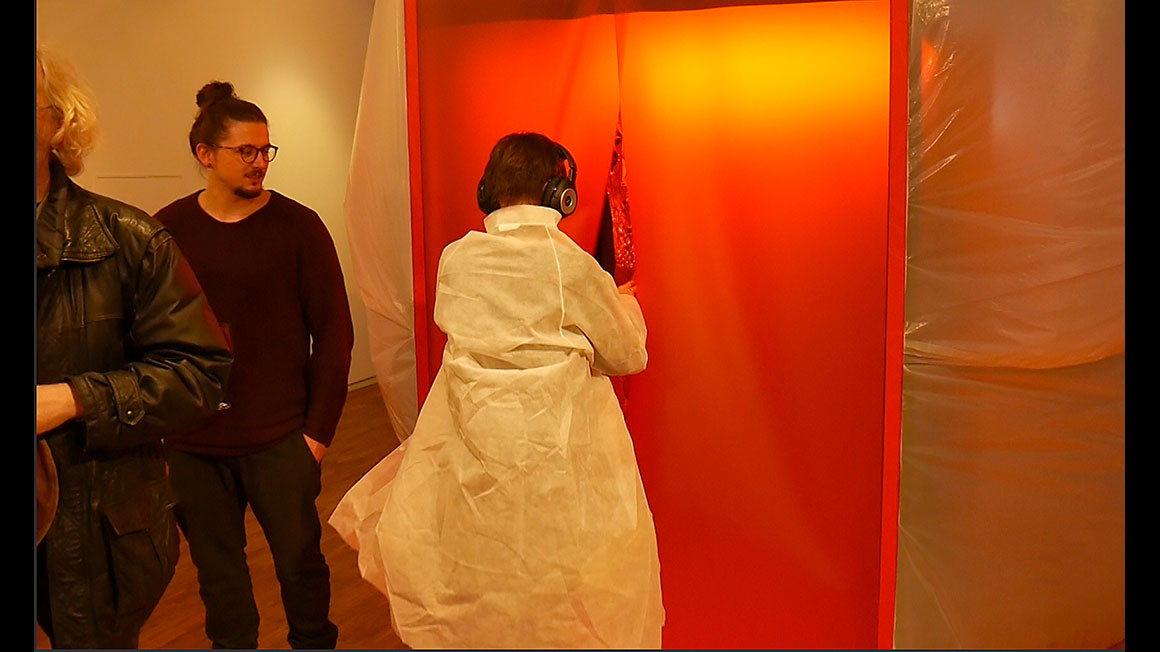

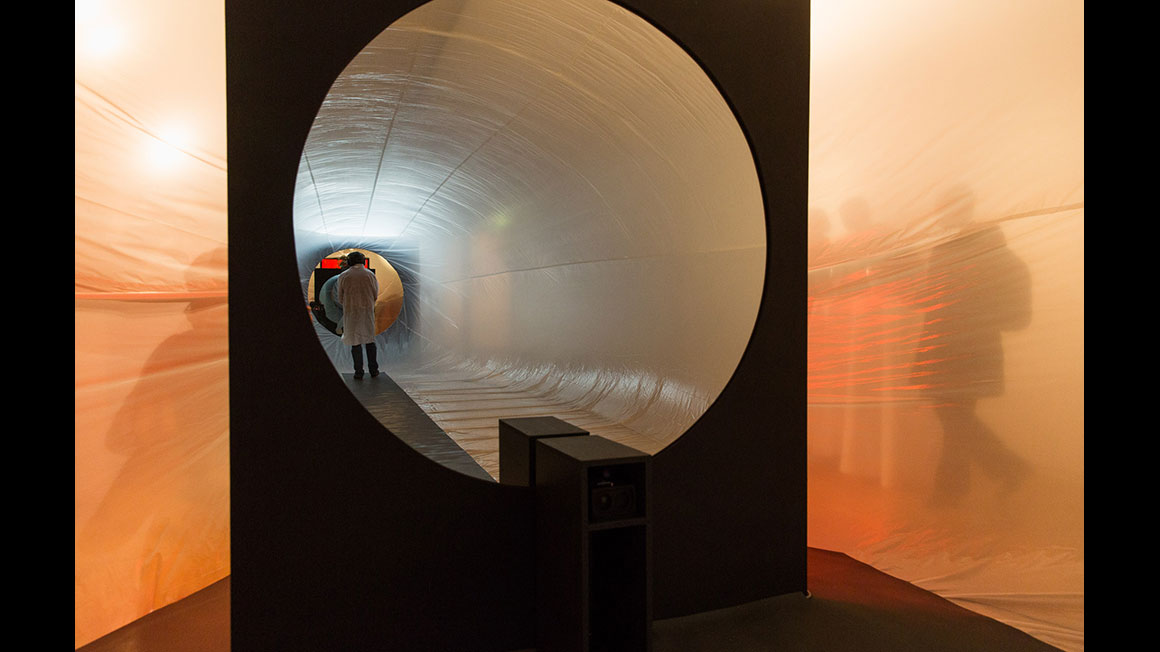
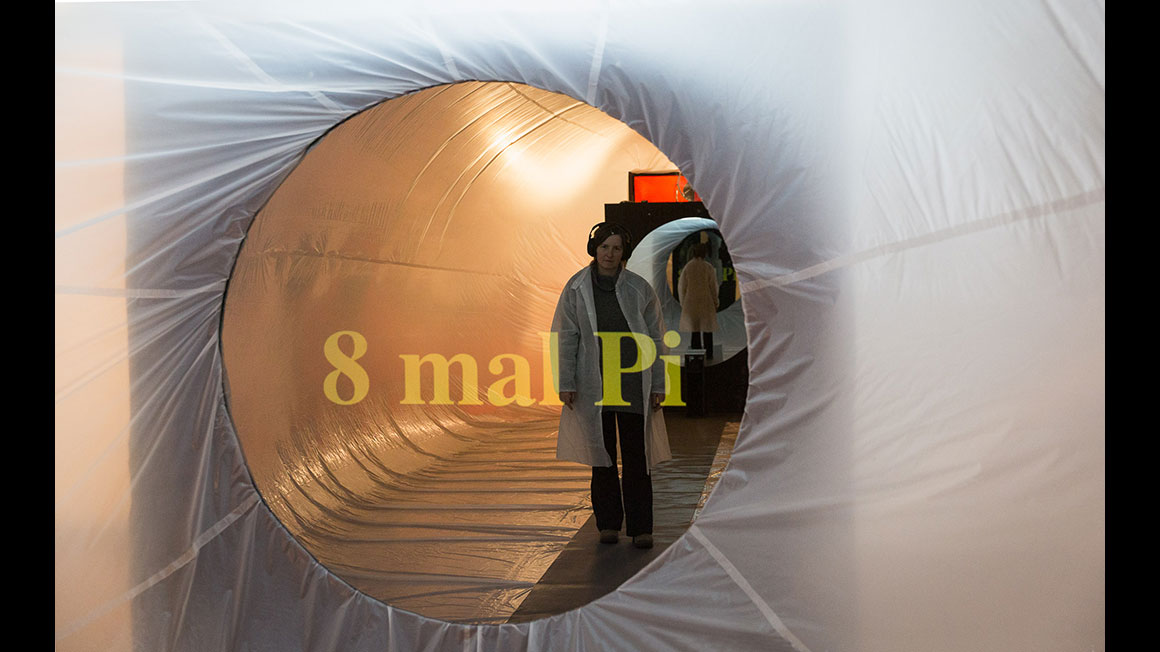
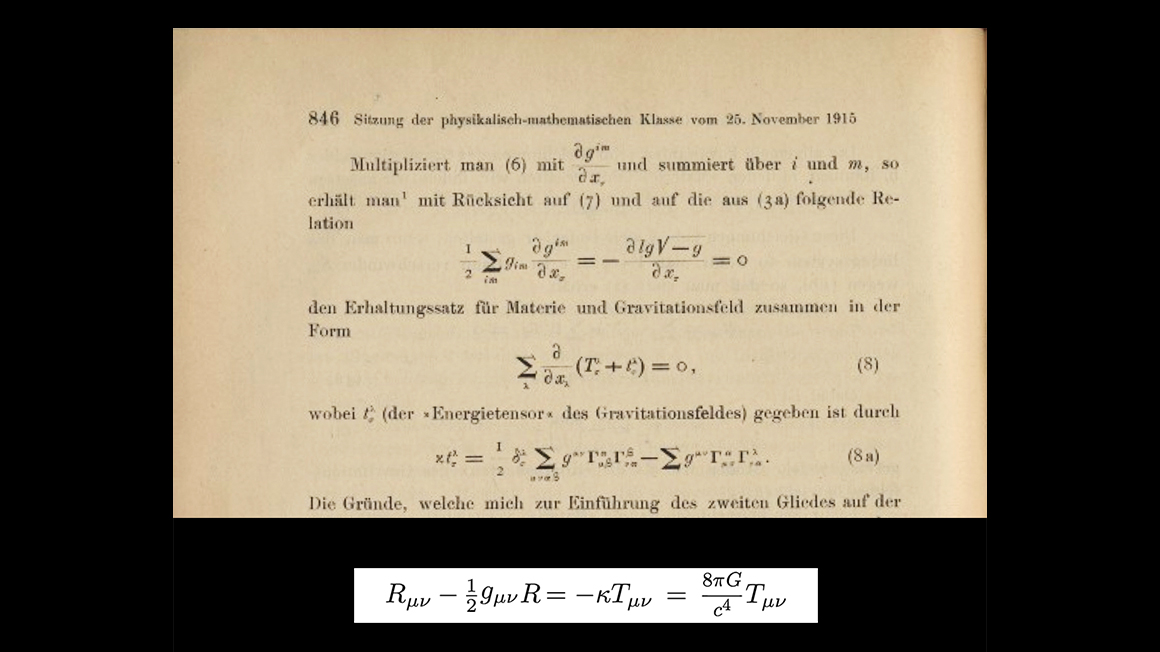
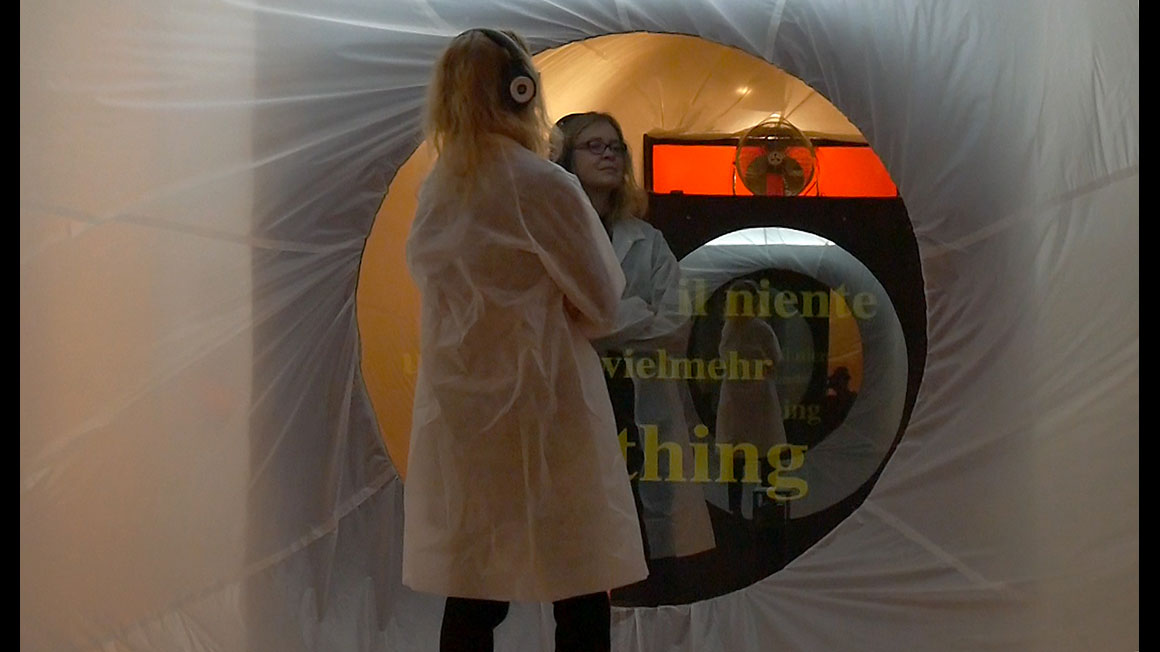
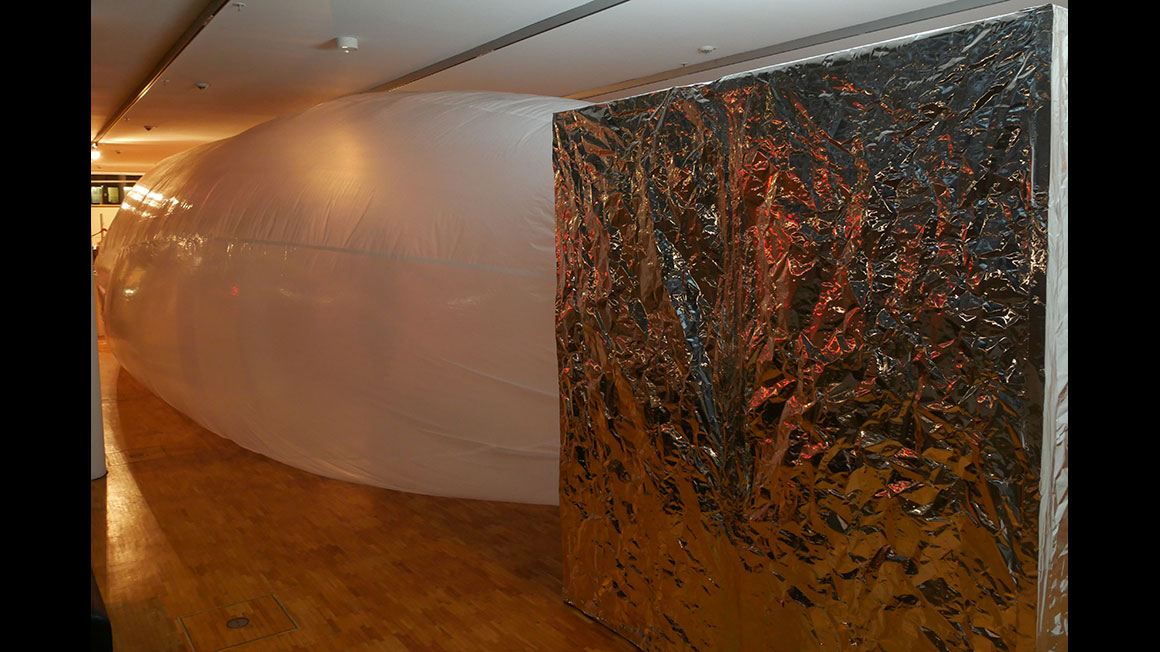
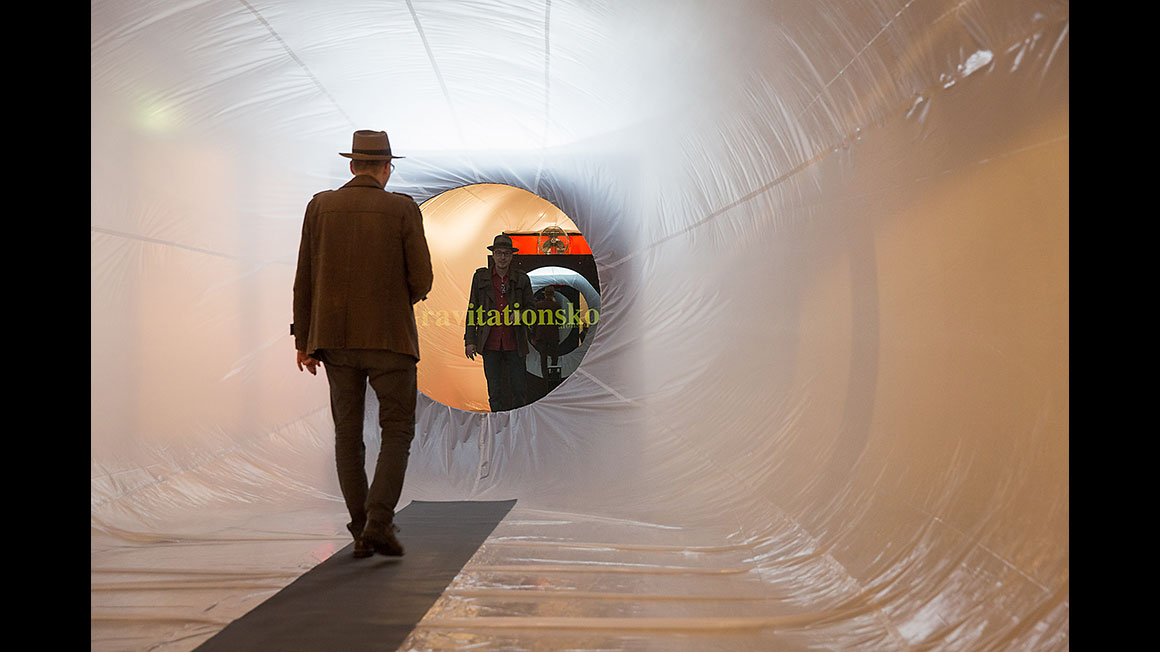
| >> booklet pdf >> print fotos >> press |
| ungrounded 2016 Walk-in space bubble with interactive installation (mirror projection, wireless headphones, laser distance sensor) Voices: Johannes Wilms with Lucile Desamory, Jeremy Woodruff, Alessandra Eramo |
|
The measuring instruments are becoming ever more precise: the second will soon be determined to the 18th decimal place, whereby a new - centimeter-accurate measurement of the earth over gravitational differences succeeds. Time measurement becomes space measurement. And yet space and time can not be grasped.
The radical challenge of the familiar vision of the world was the shock and fascination that Einstein triggered with his general theory of relativity a hundred years ago, and Heisenberg strengthened it somewhat later with his Uncertainty Principle. And a psychosocial moment is also decisive: the uncertainty, the vacillating ground, and the question of what I find to be in a completely relativistic space and time structure, which is concerned not only with physical measurements but with the present precarious feeling of life in our modern world - and to not unilaterally dissolve in rigid doctrines of faith. The accessible room bubble plays with a 'formless form' and gives the visitor a glance into a mirrored infinity. Spatial perception as well as time perception are challenged in an experimental constellation: like an elementary particle, the visitor moves on a laser-measured distance. Depending on how the visitor moves, a different animation is generated, a live-generated, individual version. The work of art is not fixed here as an absolute work, but it's dependent on the viewer as a relative work, whereby a basic knowledge of relativity can be experienced: the observer changes the observed through his observation. The content of the walkable path in the bubble is the relativity theory itself, in the form of Einstein's field equations, which were used to predict both, the 'black holes' and the 'gravitational waves' (which were first demonstrated experimentally, 100 years later, in coop. with the Albert Einstein Institute in Hanover). Hardly anyone knows Einstein's formula, which gave a completely new perspective on the relationship between space and time. On the interactive route, you walk almost through its formula, the spoken text. An audiovisual topography with merges time to space and space to time. At the end of the route, the visitor encounters Leibniz's question of all questions he has originally asked in French, but it appears here also in Italian (the language of Galileo), in English (Newton's language) and in German (Einstein's language), in the form of an audiovisual composition. 'What can we rely on when everything is relative, time and space, time and space, not comprehensible, unthinkable, and difficult to describe?" Georg Klein, in his work "ungrounded", converts this experience congenially. With headphones the visitor goes into this shapeless, labile space - a space bubble - moving between two mirrors, still blurred to the right and left the outer world, but the two mirrors, curved, expand the way to infinity. On the way text and sound of the 100-year-old Einstein field equation and of the 200-year eternally new multilingual question of Leibniz appears:''Pourquoi il ya plutôt quelque chose que rien?" From you as a viewer, the result is dependent on how the art appears. You can make space-time experiences in an artistic experiment arrangement. This convincing realization of Wittgenstein's: "Do not think, look" leads to a new dimension of communication between viewers and artists, between artists and scientists and all three.' (Prof. Wilfried Köpke) |



